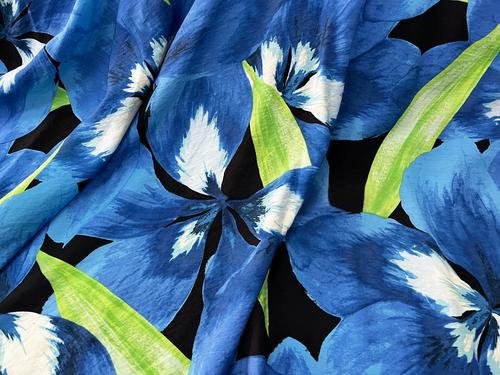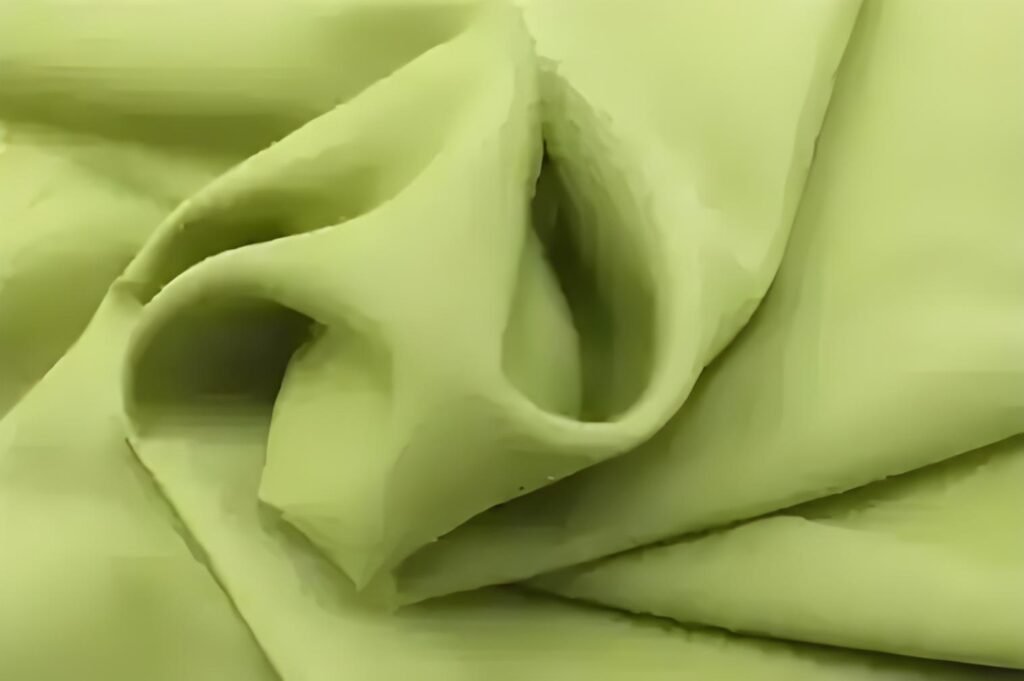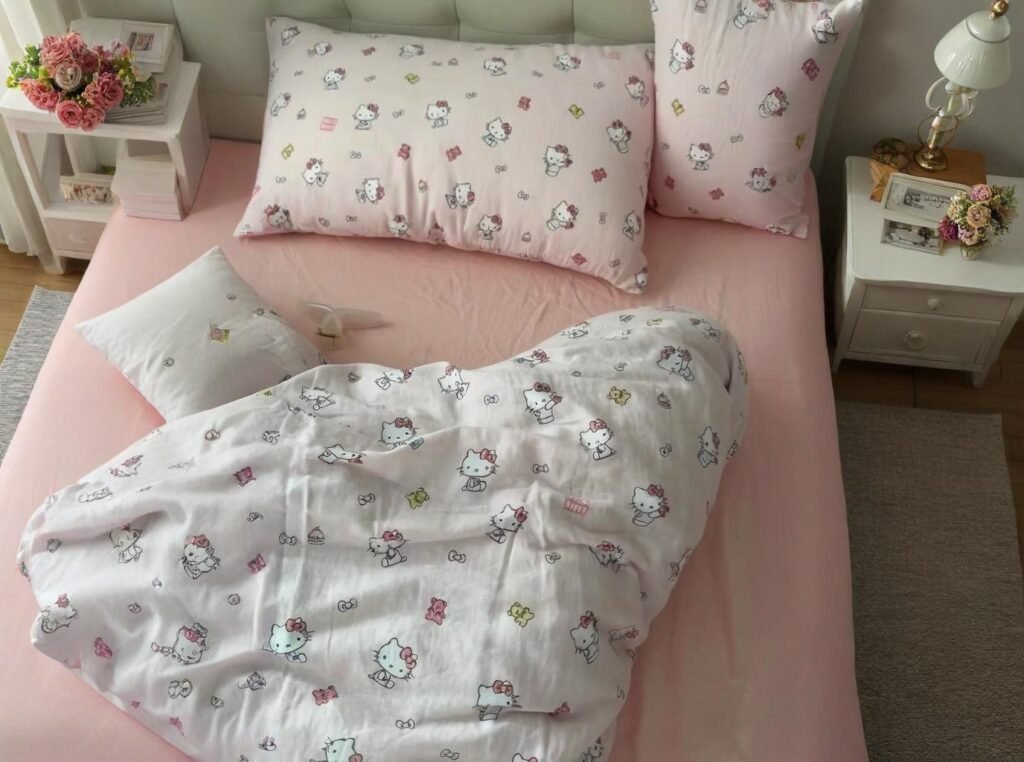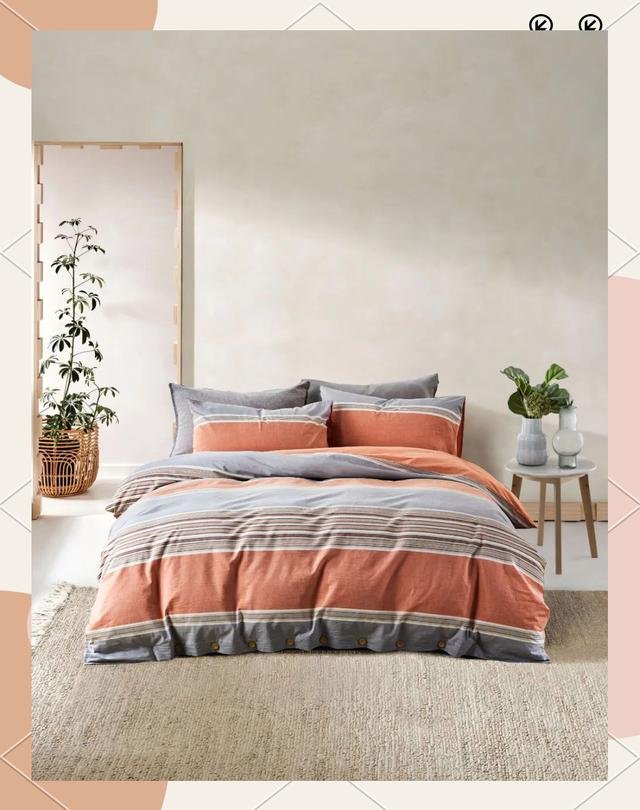
In today’s global textile industry, cotton remains one of the most versatile, affordable, and scalable fabric options for bulk sourcing. Despite the rise of synthetic alternatives, bulk buyers — from fashion brands to home textile manufacturers — consistently turn to cotton for its breathability, softness, biodegradability, and extensive customization options.
Cotton fabric offers bulk buyers an ideal balance of quality, cost, availability, sustainability potential, and adaptability across industries. Its wide variety of weaves, grades, and blends allows B2B buyers to match specific product demands while controlling margins.
Let’s face it: sourcing in bulk is far more than picking a fabric — it’s a supply chain decision. One of our B2B clients, a European hospitality chain, saw returns on their investment grow sharply after switching from synthetic to high-thread-count combed cotton sheets. Not only did customer satisfaction improve, but linen replacement costs also dropped by 35% over 18 months. This kind of real-world impact is why smart sourcing starts with understanding your cotton options deeply.
Now let’s explore why bulk buyers worldwide continue choosing cotton and which fabric types deliver the best value.
What Makes Cotton Fabric a Preferred Choice for Bulk Purchasing?
For most bulk textile buyers, cotton offers unmatched versatility. Its natural properties — combined with well-developed global supply chains — make it a safe, scalable, and reliable material for large-scale production across multiple industries.
Cotton remains the preferred choice for bulk purchasing due to its global supply availability, flexible customization, consumer demand for natural fibers, cost competitiveness, and compatibility with a variety of products ranging from apparel to industrial textiles.
Why Bulk Buyers Prefer Cotton
1️⃣ Global Supply Chain Scale
- Cotton is grown in over 80 countries.
- Top producers (India, China, U.S., Pakistan) provide large-scale export capacities.
- Standardized grading systems (USDA, ICAC) ensure quality predictability in global trade.
2️⃣ Flexible Customization
- Wide range of weaves, weights, and finishes.
- Compatible with natural or synthetic blends.
- Accepts dyeing, printing, special finishes (wrinkle resistance, flame retardancy, water repellency).
3️⃣ Consumer Preference
- Global consumers increasingly prefer natural, breathable fabrics.
- Organic and certified cotton options further boost appeal for premium buyers.
4️⃣ Cost Control
| Cost Driver | Cotton Advantage |
|---|---|
| Raw Material | Competitive pricing |
| Processing | Adaptable to automation |
| Dyeing & Finishing | High color fastness |
| Waste Minimization | Recyclable and biodegradable |
5️⃣ End-Use Versatility
| Sector | Cotton Applications |
|---|---|
| Fashion | T-shirts, dresses, denim |
| Home Textiles | Bed sheets, towels, curtains |
| Medical | Bandages, scrubs, uniforms |
| Industrial | Workwear, protective gear |
| Hospitality | Luxury linens, tablecloths |
Real Business Case:
A U.S. promotional apparel supplier ordering through SzoneierFabrics shifted to a cotton-poly blend for 1 million units of branded T-shirts. Cotton’s durability paired with synthetic wrinkle resistance reduced returns by 22% while maintaining cost targets. Custom color matching and logo printing sealed long-term contracts with multiple Fortune 500 clients.
Which Cotton Weaves Are Most Commonly Ordered by Bulk Textile Buyers?

Weave structure dramatically influences how cotton performs, feels, and sells. For bulk buyers, selecting the right weave ensures product consistency, durability, and end-user satisfaction.
Bulk buyers most often choose plain weave, twill weave, and satin weave for their adaptability, durability, and cost-effectiveness across different applications like apparel, bedding, uniforms, and industrial textiles.
The Top Bulk Cotton Weaves
1️⃣ Plain Weave (Tabby Weave)
- Simplest and most common weave structure.
- Over-under interlacing creates balanced strength.
- Affordable and highly versatile.
| Application | Use Cases |
|---|---|
| Fashion | Shirts, blouses, casualwear |
| Home Textiles | Pillowcases, tablecloths |
| Industrial | Lightweight uniforms |
2️⃣ Twill Weave
- Diagonal rib pattern increases durability.
- Excellent drape and wrinkle resistance.
- Popular for workwear and high-stress garments.
| Application | Use Cases |
|---|---|
| Apparel | Jeans, chinos, jackets |
| Industrial | Heavy-duty workwear, uniforms |
| Home Textiles | Upholstery |
3️⃣ Satin Weave
- Smooth, lustrous surface.
- Higher thread count possible for luxury markets.
- Prone to snagging but very popular for bedding.
| Application | Use Cases |
|---|---|
| Bedding | Luxury sheets, pillow shams |
| Fashion | Evening wear, lingerie |
| Hospitality | High-end hotels, spas |
4️⃣ Oxford Weave
- Basket variation of plain weave.
- Common in casual shirting markets.
- Balance between softness and durability.
5️⃣ Dobby & Jacquard Weaves
- Complex patterns woven into fabric.
- Higher cost but ideal for high-end home textiles and decorative uses.
Weave Comparison Table
| Weave Type | Durability | Cost | Market Segment |
|---|---|---|---|
| Plain | Medium | Low | Mass market |
| Twill | High | Medium | Workwear, fashion |
| Satin | Low (snag risk) | High | Luxury |
| Oxford | Medium | Medium | Business casual |
| Jacquard | High | Premium | Decor, luxury |
Real Factory Scenario:
A Middle Eastern hotel chain sourced 50,000 sets of bed linens via SzoneierFabrics using mercerized satin weave cotton at 600 thread count. Though fabric cost was 40% higher than conventional plain weave, customer satisfaction surveys showed 32% higher sleep quality ratings, directly boosting 5-star online reviews.
How Do Combed Cotton and Carded Cotton Compare for Wholesale Orders?
For wholesale buyers, understanding the difference between combed and carded cotton is crucial because these two types directly influence fabric quality, end-use application, and customer satisfaction.
Combed cotton offers superior softness, strength, and durability, making it ideal for premium wholesale orders, while carded cotton provides a more affordable option for basic mass-market applications where cost is a primary driver.
Combed vs Carded Cotton at Bulk Scale
1️⃣ Production Process Differences
| Stage | Carded Cotton | Combed Cotton |
|---|---|---|
| Fiber alignment | Light brushing to remove large impurities | Fine combing removes short fibers and impurities |
| Fiber length | Mixed (short and medium fibers) | Primarily long fibers |
| Surface texture | Slightly rougher | Smooth, soft, even |
2️⃣ Cost Impact
| Factor | Carded | Combed |
|---|---|---|
| Processing | Less expensive | More labor-intensive |
| Price per kg (2024 avg.) | $1.80 – $2.20 | $2.80 – $4.00 |
3️⃣ Performance Differences
| Attribute | Carded Cotton | Combed Cotton |
|---|---|---|
| Pilling | Higher | Lower |
| Strength | Moderate | High |
| Durability | Average | Excellent |
| Color retention | Fair | Excellent |
| Shrinkage | Higher risk | Controlled (especially with pre-shrinking) |
4️⃣ Bulk Order Use Cases
| Market | Carded Cotton | Combed Cotton |
|---|---|---|
| Promotional apparel | ✅ | ✅ (for premium lines) |
| Basic T-shirts | ✅ | ✅ |
| High-end fashion | 🚫 | ✅ |
| Babywear | 🚫 | ✅ |
| Luxury home textiles | 🚫 | ✅ |
An Australian promotional apparel company ordered 300,000 carded cotton T-shirts to meet budget constraints for a marketing campaign. After facing pilling and color fade complaints post-wash, they switched to combed cotton for future orders via SzoneierFabrics, which reduced defect rates by 42% and boosted repeat orders by 30%.
What Is the Difference Between Pima, Egyptian, and Regular Cotton for B2B Sourcing?

For bulk buyers targeting premium markets, long-staple cotton varieties like Pima and Egyptian cotton present significant quality advantages over regular short-staple cotton. But each comes with different sourcing realities, certifications, and price points.
Pima and Egyptian cotton deliver exceptional softness, durability, and luxury feel due to their long-staple fibers, while regular cotton offers affordability and scalability for mass production. Authenticity verification is crucial for B2B buyers sourcing luxury-grade cotton.
Staple Length Is Everything
1️⃣ Staple Length Comparison
| Type | Average Staple Length |
|---|---|
| Regular Upland Cotton | 22–28 mm |
| Pima Cotton | 35–40 mm |
| Egyptian Cotton | 35–50 mm |
2️⃣ Fiber Quality Attributes
| Attribute | Regular Cotton | Pima Cotton | Egyptian Cotton |
|---|---|---|---|
| Softness | Moderate | Superior | Luxury-grade |
| Strength | Average | Very strong | Extremely strong |
| Pilling | Moderate | Very low | Extremely low |
| Color retention | Fair | Excellent | Excellent |
| Durability | Good | Long-lasting | Long-lasting |
3️⃣ Sourcing Origins
| Cotton Type | Key Export Countries |
|---|---|
| Regular Cotton | China, India, Pakistan, U.S. |
| Pima Cotton | U.S. (Supima®), Peru |
| Egyptian Cotton | Egypt (Giza 45, 70, 86, 88, 92) |
4️⃣ Bulk Pricing Overview (2024 Averages)
| Type | Price (USD/kg) |
|---|---|
| Regular Cotton | $1.80 – $2.40 |
| Pima Cotton | $4.50 – $6.50 |
| Egyptian Cotton | $5.00 – $8.00 |
5️⃣ Market Positioning by Industry
| Industry | Regular Cotton | Pima | Egyptian |
|---|---|---|---|
| Fast Fashion | ✅ | 🚫 | 🚫 |
| Premium T-Shirts | ✅ | ✅ | 🚫 |
| High-End Fashion | 🚫 | ✅ | ✅ |
| Luxury Bedding | 🚫 | ✅ | ✅ |
| Hospitality | ✅ | ✅ | ✅ (luxury suites) |
Counterfeit Egyptian Cotton Scandal
Many retailers have faced scandals involving falsely labeled Egyptian cotton. In 2016, Target pulled thousands of sheets falsely marketed as 100% Egyptian. B2B buyers sourcing through certified suppliers like SzoneierFabrics avoid such issues by demanding full supply chain documentation, third-party lab verification, and origin transparency.
How Do Organic Cotton Options Benefit Bulk Buyers Seeking Sustainability?
Sustainability is no longer just a marketing trend; it’s rapidly becoming a procurement standard for many B2B buyers. Governments, brands, and retailers are increasing pressure on suppliers to prove environmental responsibility — and organic cotton has become a strong solution.
organic cotton offers bulk buyers environmental credibility, brand differentiation, regulatory compliance, and growing consumer demand — while also reducing long-term legal and reputational risks.
Why Bulk Buyers Are Shifting to Organic Cotton
1️⃣ Environmental Benefits
| Factor | Organic Cotton Advantage |
|---|---|
| Pesticide Use | None (synthetic banned) |
| Water Use | Up to 91% less local water withdrawal (Textile Exchange data) |
| Soil Health | Improved biodiversity, less erosion |
| Greenhouse Gas Emissions | Up to 46% lower (compared to conventional farming) |
2️⃣ Market & Consumer Pressure
- Millennials and Gen Z prioritize eco-labels when buying apparel and home textiles.
- Major global brands (H&M, Patagonia, IKEA) have committed to 100% organic or sustainable cotton targets.
- Organic certification helps brands meet Scope 3 emissions reporting standards increasingly mandated in Europe and North America.
3️⃣ Certification Assurance
| Certification | Scope |
|---|---|
| GOTS | Full supply chain sustainability and social responsibility |
| OCS | Fiber content verification |
| OEKO-TEX 100 | Chemical safety during production |
4️⃣ B2B Compliance & Trade Advantages
| Factor | Benefit |
|---|---|
| Import regulations | Simplified customs clearance for eco-certified products |
| Corporate sourcing contracts | Preferred vendor status |
| Supply chain audits | Easier compliance documentation |
5️⃣ Cost Consideration
| Grade | Price Comparison |
|---|---|
| Mid-grade organic cotton | $3.20 – $4.60/kg |
| Conventional cotton | $1.80 – $2.70/kg |
While organic cotton carries a 20-50% premium, many B2B buyers offset this via premium pricing, faster market entry into green markets, and higher customer loyalty.
Long-Term Contracts Win
A German babywear manufacturer switched to GOTS-certified organic cotton via SzoneierFabrics for 200,000 units annually. Within 18 months, they secured private-label partnerships with major EU retailers under stricter environmental procurement rules — fully covering their premium material costs.
Which Cotton Blends Offer the Best Cost-Performance Ratio for Large-Scale Production?

Blended fabrics combine the best properties of cotton with synthetic or alternative fibers to maximize strength, minimize shrinkage, and balance cost for large-scale production — making them especially attractive for budget-sensitive B2B orders.
cotton-polyester, cotton-spandex, and cotton-modal blends deliver bulk buyers optimal cost-performance ratios for mass market applications where wrinkle resistance, flexibility, durability, and moisture management are required.
Top Cotton Blend Options for B2B Buyers
1️⃣ Cotton-Polyester Blends
- Most widely used blend in global bulk markets.
- Improves wrinkle resistance, shrink control, and colorfastness.
- Lower raw material costs.
| Common Ratio | 60% Cotton / 40% Polyester | | Apparel Use | T-shirts, work uniforms, promotional items | | Fabric Price | $1.90 – $2.50/kg |
2️⃣ Cotton-Spandex (Elastane) Blends
- Adds stretch and flexibility for comfort and fit.
- Popular for activewear, leggings, jeans.
| Common Ratio | 95% Cotton / 5% Spandex | | Apparel Use | Athleisure, yoga, denim | | Fabric Price | $3.00 – $4.20/kg |
3️⃣ Cotton-Modal or Cotton-Tencel Blends
- Enhanced softness, moisture-wicking, and drape.
- Premium markets favor these blends for comfort-focused products.
| Common Ratio | 60% Cotton / 40% Modal | | Apparel Use | Luxury loungewear, premium T-shirts | | Fabric Price | $4.50 – $5.80/kg |
4️⃣ Cotton-Linen Blends
- Lightweight, breathable, and eco-friendly image.
- Used for summer apparel and resort wear.
| Common Ratio | 70% Cotton / 30% Linen | | Apparel Use | Shirts, dresses, casualwear | | Fabric Price | $4.00 – $6.00/kg |
Cost-Performance Comparison Table
| Blend | Durability | Comfort | Cost | Popular Market |
|---|---|---|---|---|
| Cotton-Poly | High | Moderate | Low | Mass market |
| Cotton-Spandex | High | High | Medium | Activewear |
| Cotton-Modal | High | Very High | High | Premium casual |
| Cotton-Linen | Medium | High | High | Resortwear |
Activewear Success Story
A U.S. athleisure brand sourcing through SzoneierFabrics used 92% cotton / 8% spandex for a yoga pant collection. Bulk orders reached 500,000 units annually after customer feedback highlighted superior stretch, breathability, and shape retention. The brand became one of Amazon’s top sellers in the category within 24 months.
What Fabric Finishes Should Bulk Buyers Consider for Cotton Fabrics?

Finishing is where raw cotton fabric transforms into a high-performance product ready for market. Bulk buyers must evaluate finishes carefully, as they directly affect product quality, durability, appearance, and buyer satisfaction.
bulk buyers should consider preshrinking, mercerizing, antimicrobial, moisture-wicking, and wrinkle-resistant finishes to ensure their cotton fabrics meet end-use demands and customer expectations.
Key Finishing Options for Bulk Cotton Orders
1️⃣ Preshrunk (Sanforized) Finish
- Mechanically stabilizes fabric to minimize shrinkage after washing.
- Essential for apparel brands and home textiles to avoid customer complaints.
| Shrinkage Control | 95–98% stability | | Bulk Buyer Impact | Fewer returns, better sizing consistency |
2️⃣ Mercerization
- Chemical treatment swells fibers to improve dye uptake, luster, and tensile strength.
- Common for premium apparel, luxury bedding, and high-end shirting.
| Benefits | Enhanced color vibrancy, silky feel | | Strength Increase | Up to 20% |
3️⃣ Wrinkle-Resistant Finish
- Cross-linking agents reduce fabric creasing.
- Key for workwear, uniforms, and formalwear.
| Result | Easy care, longer wear life |
4️⃣ Moisture-Wicking Finish
- Improves comfort in warm or active environments.
- Used in activewear, sportswear, and outdoor apparel.
| Popular Markets | Athleisure, uniforms, golf shirts |
5️⃣ Antimicrobial & Odor Control
- Inhibits bacterial growth, extending freshness.
- High demand in medical textiles, sportswear, and hotel linens.
| Technologies | Silver ions, zinc-based agents |
6️⃣ Stain-Resistant Finish
- Adds protective coatings that repel liquids and stains.
- Common for table linens, hospitality, and workwear.
7️⃣ Flame Retardant Finish
- Required for industrial workwear, military, and certain hospitality settings.
| Compliance Standards | NFPA 701, ISO 11612 |
Real Case: Hospitality Bedding Upgrade
A luxury resort chain partnered with SzoneierFabrics to source 1,000-thread-count Egyptian cotton sheets with mercerization and wrinkle-resistant finishes. Customer satisfaction scores related to linen quality improved by 34%, while linen replacement costs dropped by 42% due to improved durability.
How Can B2B Buyers Evaluate Quality and Compliance Before Placing Large Cotton Fabric Orders?
When placing bulk orders, quality issues can multiply fast — leading to costly returns, lost contracts, or even legal penalties. Smart B2B buyers implement thorough quality assurance protocols before signing major cotton contracts.
bulk buyers should verify supplier credentials, demand full lab test reports, inspect production facilities, confirm certifications, and conduct pre-shipment inspections to ensure consistency, compliance, and brand safety.
Step-by-Step Quality Evaluation Process
1️⃣ Supplier Certification Verification
| Certification | Purpose |
|---|---|
| GOTS | Organic & social compliance |
| OEKO-TEX 100 | Chemical safety |
| ISO 9001 | Factory quality management |
| BSCI / SEDEX | Ethical labor standards |
2️⃣ Laboratory Testing
| Test | Evaluates |
|---|---|
| ISO 105 | Colorfastness to washing, rubbing, light |
| ASTM D5034 | Tensile strength |
| ISO 6330 | Shrinkage after laundering |
| AATCC 8 | Crocking resistance |
3️⃣ Fabric Technical Data Sheets (TDS)
- Fiber content confirmation
- GSM (fabric weight)
- Yarn count
- Finish treatments applied
- Shrinkage tolerance
4️⃣ Pre-Shipment Inspections
| Inspection Type | Purpose |
|---|---|
| 4-Point Fabric Inspection | Surface defects, consistency |
| Dimensional Check | Shrinkage, length, width accuracy |
| Packaging Review | Compliance with shipping regulations |
5️⃣ Factory Audits
- Review of production lines, storage, and handling.
- Verification of segregation for organic vs. conventional cotton.
- Labor practices and worker safety compliance.
Preventing Major Brand Loss
A UK fashion retailer nearly canceled a 1-million-meter cotton contract after receiving non-compliant samples from a low-cost supplier. With support from SzoneierFabrics, full compliance documentation, certified lab results, and on-site audit transparency restored confidence and secured the deal — saving both parties from legal and financial damage.
Partner with SzoneierFabrics for Reliable Cotton Fabric Bulk Orders
For B2B buyers sourcing cotton fabrics in bulk, success depends on much more than price. Choosing the right fabric types, finishes, certifications, and supplier guarantees long-term customer satisfaction, brand protection, and stable supply chain partnerships.
At SzoneierFabrics, we deliver:
- ✅ A complete portfolio of combed, carded, organic, blended, and long-staple cotton fabrics
- ✅ Fully certified production (GOTS, OEKO-TEX, ISO, BSCI)
- ✅ Flexible MOQs starting from 100 meters
- ✅ Fast sampling and short production lead times
- ✅ Professional design customization and technical support
- ✅ Proven track record serving global brands across Europe, North America, Australia, and Asia
Contact us today to request your cotton fabric quotation, free sample, or custom development consultation.

